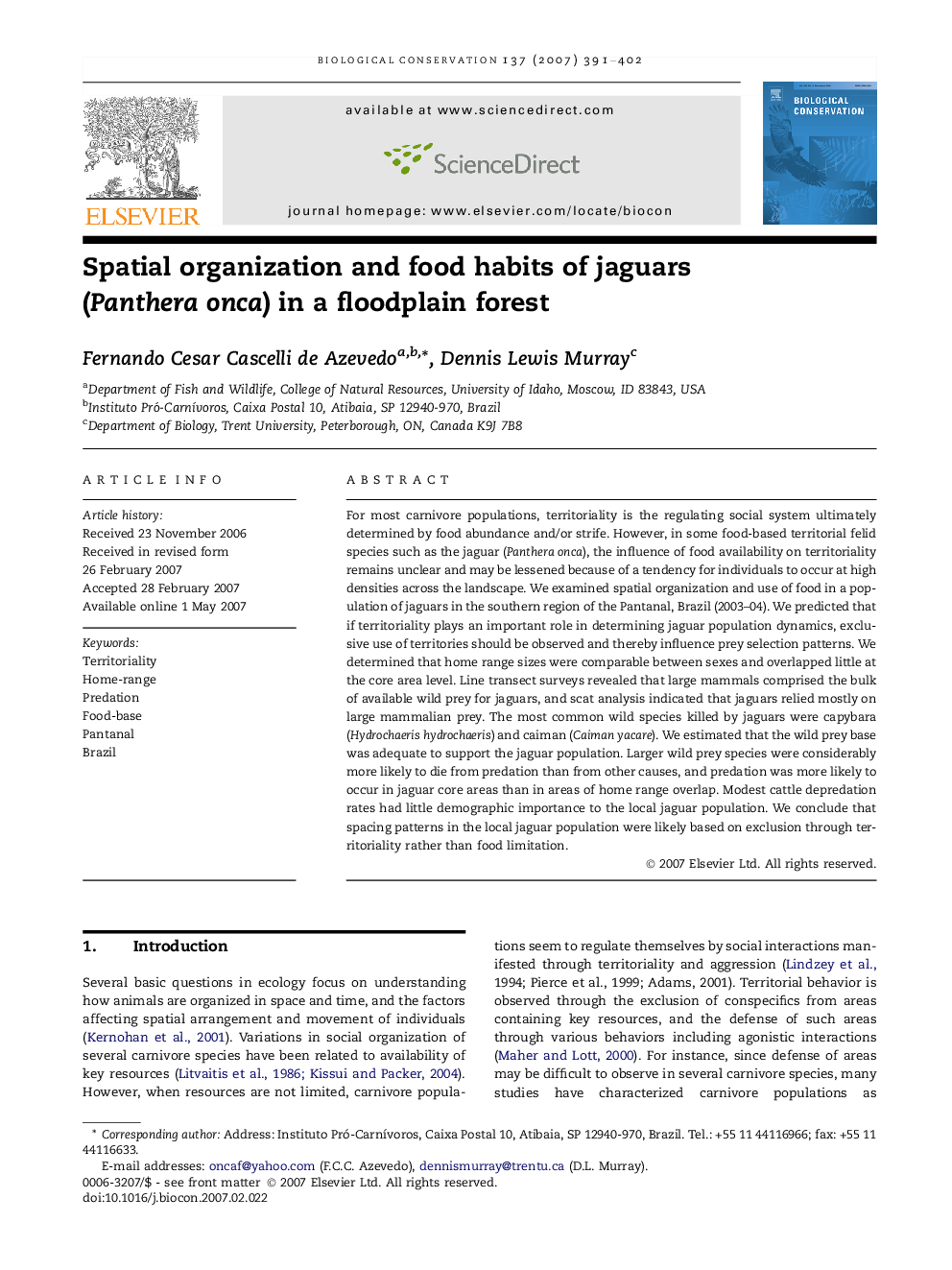| Article ID | Journal | Published Year | Pages | File Type |
|---|---|---|---|---|
| 4387209 | Biological Conservation | 2007 | 12 Pages |
Abstract
For most carnivore populations, territoriality is the regulating social system ultimately determined by food abundance and/or strife. However, in some food-based territorial felid species such as the jaguar (Panthera onca), the influence of food availability on territoriality remains unclear and may be lessened because of a tendency for individuals to occur at high densities across the landscape. We examined spatial organization and use of food in a population of jaguars in the southern region of the Pantanal, Brazil (2003-04). We predicted that if territoriality plays an important role in determining jaguar population dynamics, exclusive use of territories should be observed and thereby influence prey selection patterns. We determined that home range sizes were comparable between sexes and overlapped little at the core area level. Line transect surveys revealed that large mammals comprised the bulk of available wild prey for jaguars, and scat analysis indicated that jaguars relied mostly on large mammalian prey. The most common wild species killed by jaguars were capybara (Hydrochaeris hydrochaeris) and caiman (Caiman yacare). We estimated that the wild prey base was adequate to support the jaguar population. Larger wild prey species were considerably more likely to die from predation than from other causes, and predation was more likely to occur in jaguar core areas than in areas of home range overlap. Modest cattle depredation rates had little demographic importance to the local jaguar population. We conclude that spacing patterns in the local jaguar population were likely based on exclusion through territoriality rather than food limitation.
Related Topics
Life Sciences
Agricultural and Biological Sciences
Ecology, Evolution, Behavior and Systematics
Authors
Fernando Cesar Cascelli de Azevedo, Dennis Lewis Murray,
